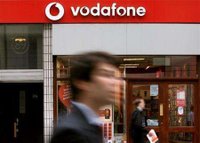
When you set about transforming an under-performing services marketer, so the thinking goes, often the most important and hardest thing to change is its culture. Organisations like banks and telecoms perform best when the beliefs and behaviours of customer service personnel are aligned with corporate mission and values, and when everyone in the organisation understands his or her role in creating value for both customers and shareholders.
Employees of Telstra, and especially those in "front-line" functions like call centres, have doubtless had a hard time keeping the faith through recent years of struggle, uncertainty and unpopularity. But it looks like Sol Trujillo and Phil Burgess, experts in organisational change, may have succeeded in turning around the culture and boosting staff confidence.
Never mind the broadband technology, I met one of the "Next G" of Telstra employees over the weekend. She was proud of the company, apparently certain of the corporate mission and vision, and unshakeable in her dedication to ensuring Telstra targets the right customers… it’s just that I clearly wasn’t one of them!
My daughter won a mobile phone on Saturday. It came with a Telstra Pre-Paid "bundle". She already has a hand-me-down phone with a pre-paid account, currently with Optus – Telstra had previously been sopping up her unused credit every few weeks, leaving the phone useless in the occasional “emergency” situations for which it is intended.
So we set about switching her over to the funky new handset. Optus told me I needed to call Telstra to "unlock" the new phone so it could be used on another provider’s network.
"You’ll have to pay an unlocking fee," explained the Telstra customer service officer to whom I eventually got through. "For a new phone, that will probably be around $200."
When I said I thought that was a bit steep, especially for a pre-paid phone won by a 12-year-old, she disagreed. Anyway, she said, “I wouldn’t be giving a phone to a 12-year-old.”
Introducing Telstra’s new positioning in mobile telephony: the responsible, adults-only, service provider that knows better than you do whether your child should have a phone. If Telstra intends to put morals ahead of revenue and no longer sell mobile service to parents on behalf of their kids, shouldn’t we have seen some kind of announcement to the ASX?
Not that I got a chance to ask this newly-aligned and empowered Telstra advocate about the company’s strategy. "I actually work for Telstra and I won’t sit here and listen to you criticising them," she said. And there, by mutual consent, the call ended.



